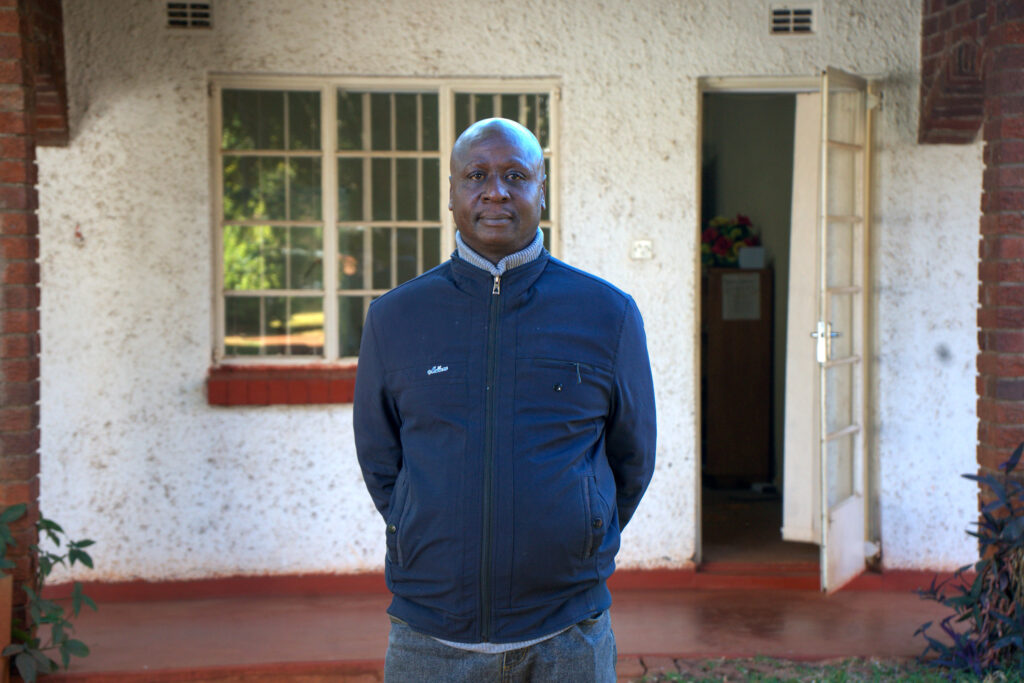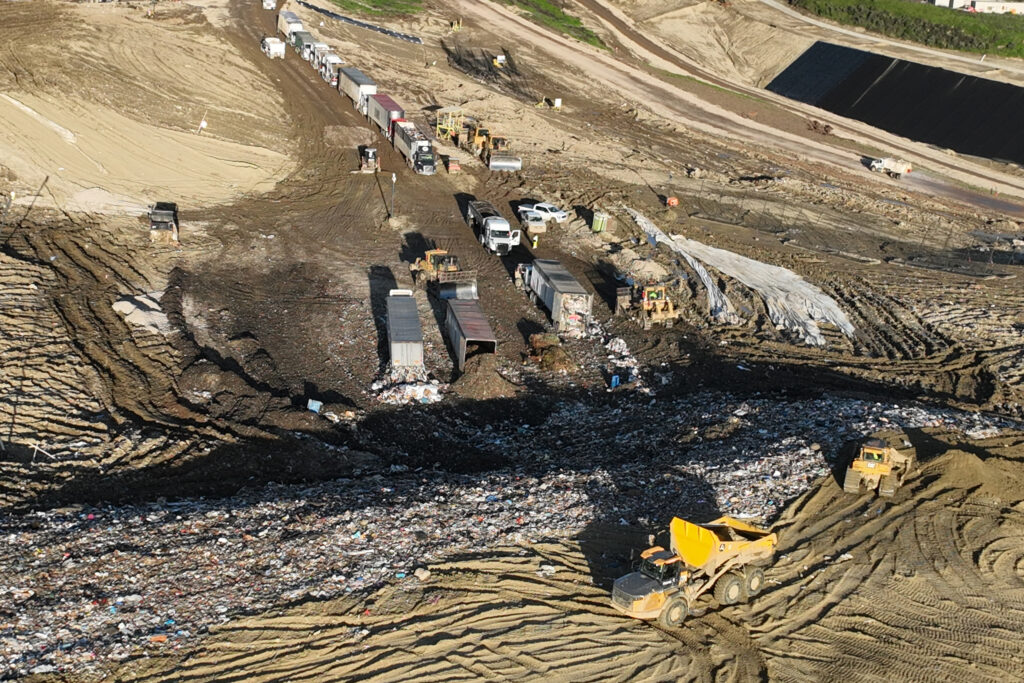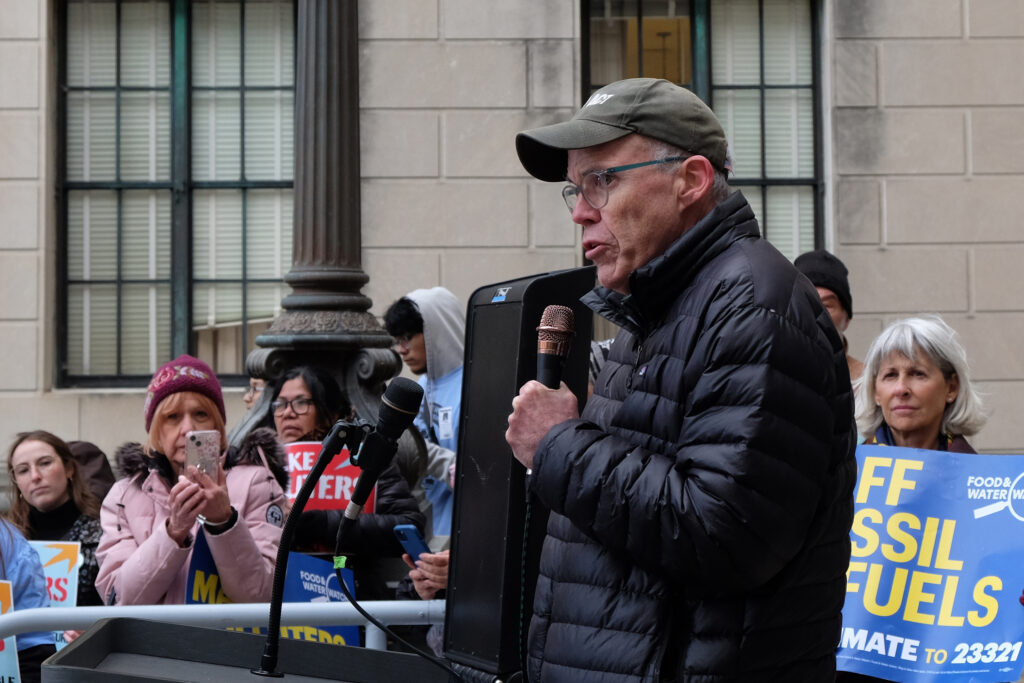CAMERON, Ariz.—The Navajo Nation doesn’t allow radioactive uranium ore to be transported through its lands without permission, but that’s exactly what a mining company began doing this week on roads administered by the state—which has no such restrictions.
Navajo Nation President Buu Nygren told tribal police to stop the trucks, and he issued an executive order Wednesday that called for the company to negotiate a hauling agreement with the tribe before any other trucks enter Navajo land. First Lady Jasmine Blackwater-Nygren announced a “No Illegal Uranium Hauling” walk along part of the transportation route in Cameron. Arizona Gov. Katie Hobbs, under pressure for months from tribes and environmental advocates over the situation, subsequently brokered a deal with the company to hit pause.
In a Thursday night call, Hobbs told Nygren that shipments would halt until the company—Energy Fuels Resources—and the Navajo Nation hold discussions about safety concerns.
Explore the latest news about what’s at stake for the climate during this election season.
While Nygren is glad the governor acted, he wants to know how long transportation activities will stop.
“I don’t know what temporary hold means on the governor’s side,” Nygren said in an interview after the walk, held Friday morning. “Does that mean five days? Does that mean 10 days? Does that mean a month? … I hope temporary means six months, aligning with my executive order, so that we can have those discussions.”
Asked by Inside Climate News about timing, a Hobbs spokesperson said, “At this moment, there’s no additional information on when the end date will be.”
Energy Fuels Resources, the owner of Pinyon Plain Mine in Arizona and White Mesa Mill in Utah, confirmed it started hauling ore from one site to the other on Tuesday. In a statement issued before the agreement to pause that work, the company said this transportation is “safe and legal” and “in accordance with all applicable laws and regulations.”
State law doesn’t bar that transport, but a Navajo law enacted in 2012 does. The situation cuts to the heart of U.S. history with Indigenous people: Treaty agreements that acknowledge tribal nations’ right to determine what happens on their lands are routinely ignored by states, companies and the federal government.
“Energy Fuels is subject to Navajo authority when accessing Navajo territory and can be excluded from Navajo territory for threatening the well-being of the Navajo People, although they likely claim they are beyond Navajo authority when on a state highway running through the Navajo reservation,” Gabe Galanda, an Indigenous rights attorney and the managing lawyer at Galanda Broadman, said in an email. “The state of Arizona may likewise claim regulatory power over a state highway running through the Navajo reservation but that assertion affronts Navajo inherent sovereignty and territorial control.”
Navajo Police Chief Ron Silversmith said officers stopped two trucks contracted by Energy Fuels that were traveling southbound the day deliveries began on Tuesday, and they checked conditions of both before letting them continue.
“Our officers were out there early this morning to ensure they don’t come through again,” Silversmith said in a statement on Wednesday.
Energy Fuels started mining at Pinyon Plain, near Grand Canyon National Park, in late December. Uranium is used to fuel nuclear power, which emits no greenhouse gases. But decades of uranium mining and processing on the Navajo Nation, first for nuclear weapons and then for power plants, sickened residents and left massive contamination behind.


The 2012 Navajo law allows uranium transportation related to cleanup, but other uses are prohibited without consent from the tribe, which requires an agreement be struck first.
Energy Fuels, which commented before Hobbs’ action and did not respond to Inside Climate News questions afterward, said moving uranium ore by road is not risky.
“Tens of thousands of trucks have safely transported uranium ore across northern Arizona since the 1980s with no adverse health or environmental effects,” Energy Fuels President and CEO Mark Chalmers said in a statement. “Materials with far greater danger are transported every day on every road in the county. Ore is simply natural rock. It won’t explode, ignite, burn or glow, contrary to what opponents claim.”
Energy Fuels said it “voluntarily endeavored” to inform relevant stakeholders about the impending ore delivery, including with a briefing on July 19 the company said was attended by federal, state, county and tribal officials.
“It was at these meetings where we provided extensive information on legal requirements, safety and emergency response,” Chalmers said in a statement. “We have gone far above-and-beyond the legal requirements, and we look forward to future dialog on these important issues.”
This story is funded by readers like you.
Our nonprofit newsroom provides award-winning climate coverage free of charge and advertising. We rely on donations from readers like you to keep going. Please donate now to support our work.
Donate Now
But Nygren said the Navajo Nation Environmental Protection Agency received no notification of that meeting. As a result, no one from the tribe was there, he said.
“The lack of notification to the Navajo Nation is a blatant disregard for our tribal sovereignty and exposes our Diné people to toxic uranium, a substance that has devastated our community for decades,” he said in a statement before the governor’s action.
The Havasupai Tribal Council said it did not learn hauling was underway until staff at the Kaibab National Forest notified them. Pinyon Plain occupies approximately 17 acres of the tribe’s ancestral homelands, now managed by the U.S. Forest Service.
“Despite our continuous opposition … Energy Fuels Resources Inc. has once again acted in its own self-serving interest by beginning to haul uranium ore on public roads, through our ancestral lands and into the Navajo Nation,” the tribe said in a statement. The Havasupai said Energy Fuels “promised” two weeks’ notice to tribes, the Forest Service and others before hauling started.
Kaibab National Forest stated on its website that the company notified staff the morning of July 30. Although the Forest Service had requested advance notice from Energy Fuels, the company was not required to give any.
The company did not notify Arizona Department of Transportation “and isn’t required to do so,” ADOT spokesperson Steve Elliott said.


The walk Blackwater-Nygren organized was originally meant to protest the ongoing hauling. After the trucking pause, she and Nygren led it Friday morning to raise local awareness about what they want done next.
A group of several dozen people walked on the northbound lane of U.S. Route 89, following a section of the route the trucks took earlier in the week. The president and first lady helped carry a large banner with the words “Respect Tribal Sovereignty” in yellow letters. One man sang in the Navajo language to bless attendees, spoke about protecting the environment from uranium mining and explained the role of Mother Earth in Navajo well-being.
Navajo police stopped the flow of traffic as the group walked to the Cameron Chapter house, a long line of cars and trucks inching behind them. Some motorists heading the other direction honked their horns in support as they passed.
About This Story
Perhaps you noticed: This story, like all the news we publish, is free to read. That’s because Inside Climate News is a 501c3 nonprofit organization. We do not charge a subscription fee, lock our news behind a paywall, or clutter our website with ads. We make our news on climate and the environment freely available to you and anyone who wants it.
That’s not all. We also share our news for free with scores of other media organizations around the country. Many of them can’t afford to do environmental journalism of their own. We’ve built bureaus from coast to coast to report local stories, collaborate with local newsrooms and co-publish articles so that this vital work is shared as widely as possible.
Two of us launched ICN in 2007. Six years later we earned a Pulitzer Prize for National Reporting, and now we run the oldest and largest dedicated climate newsroom in the nation. We tell the story in all its complexity. We hold polluters accountable. We expose environmental injustice. We debunk misinformation. We scrutinize solutions and inspire action.
Donations from readers like you fund every aspect of what we do. If you don’t already, will you support our ongoing work, our reporting on the biggest crisis facing our planet, and help us reach even more readers in more places?
Please take a moment to make a tax-deductible donation. Every one of them makes a difference.
Thank you,



















